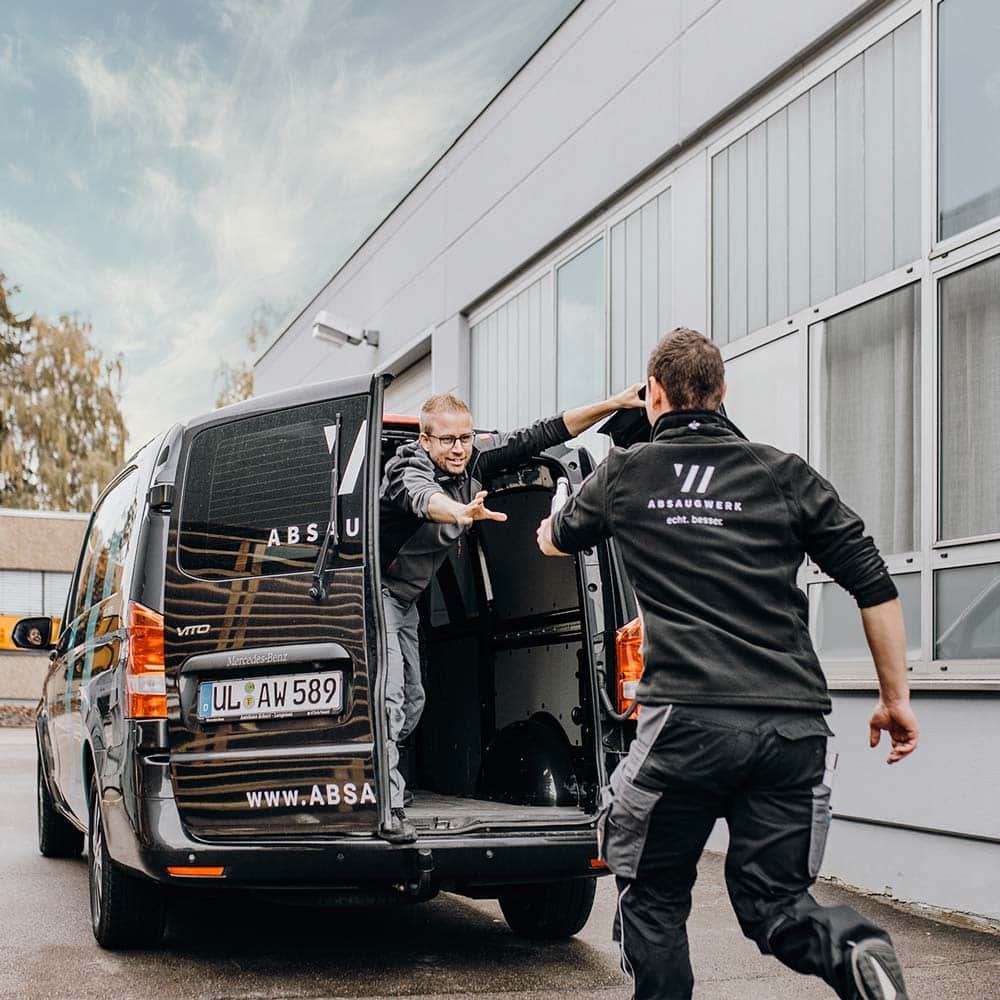Hall ventilation IN INDUSTRY
What is there to consider in a hall ventilation system?
Hall ventilation is primarily used to exchange exhaust air and fresh air in a production hall. Released emissions such as smoke, dust or oil mist must also be effectively filtered out of the exhaust air to protect employees and the environment. When planning an energy-efficient ventilation system, the design, size and thermal insulation are just as decisive parameters as the working hours, number of workplaces and amount of pollutants (smoke, dust, etc.).
Mechanical or natural ventilation?
Natural ventilation, which usually takes place by opening windows, doors or gates, reaches its limits in large room volumes and cannot be sufficiently implemented in autumn and winter . Furthermore, there are valid workplace regulations for filtering emissions that get into the breathing air during welding, deburring or polishing.
Mechanical ventilation systems are therefore usually used in industrial halls. These continuously filter large amounts of air and automatically supply the hall with fresh air. Pollutants such as smoke, dust or oil mist are efficiently filtered out of the breathing air.. Effective heat recovery can also save up to 70 % of heating costs.
Centralized and decentralized ventilation systems?
Central hall ventilation systems can be more efficient and economical than point extraction systems. They consist of an extraction systemin which the polluted air is filtered. A permanently installed Pipe system is used to collect and supply exhaust air and fresh air. The extraction system or filter unit can be located inside or outside the hall . The process is particularly suitable for large production halls with several workstations or for processes with high levels of smoke/dust.
Decentralized ventilation systems, on the other hand, extract the polluted air at specific points, e.g. via an extraction table, and clean them via a extraction system. However, the entire hall air is not circulated, and the warm, contaminated air may collect under the hall ceiling.
Filter towers also serve as decentralized ventilation systems. They draw in the exhaust air, filter it and feed the cleaned air back into the hall via a ventilation grille. As plug & play ventilation systems, they have the advantage that they can be installed quickly and are immediately ready for use.
Filtertürme zur Hallenabsaugung
Plug & Play – sofort einsatzbereit
Techniques for industrial hall extraction
As a manufacturer of extraction systems and hall extraction, we supply holistic systems from a single source. This includes: Capture, piping system, exhaust system and other equipment. Integrate point detections such as extraction tables, extraction hoods or extraction arms. Optionally, we also offer cross heat exchangers, continuous mixing of fresh air and individual solutions for your application.
Push-Pull:
In push-pull mixed ventilation, the purified air is introduced through jet nozzles of the supply air pipe on the hall ceiling and drawn in on the opposite side through exhaust nozzles of the exhaust air pipe and filtered in an exhaust system. Mixing of the hall air occurs mainly in the upper third of the hall, where the warm air containing pollutants collects.
Push-Pull Plus:
In Push-Pull Plus systems, additional air source emitters on the floor support the intrinsic thermal properties of the welding fumes. The contaminated air rises more quickly and is captured at the hall ceiling, passed through an exhaust system via a pipe system and filtered.
Layered Ventilation:
In the principle of layered ventilation, the cleaned air is supplied via displacement outlets close to the floor. The fresh air mixes again with pollutants, heats up and rises upwards due to its thermal properties, where it is extracted via the exhaust air pipe on the hall ceiling and cleaned in an extraction system.
The principle of layered ventilation is also recommended by the IFA (Institute for Occupational Safety and Health of the German Social Accident Insurance). For more information, visit www.DGUV.de/ifa
Inverse Layer Ventilation:
The inverse layer ventilation works laterally reversed in contrast to the layer ventilation. The purified air is blown towards the floor via jet nozzles of the fresh air duct on the hall ceiling. There, the clean air mixes with the polluted air and is collected again near the floor via extraction columns or extraction hoods and filtered in an extraction system.
Energy saving through hall ventilation systems
with heat recovery
For ventilation systems in industry, the use of heat exchangers is now even required by law. The warm, polluted air is used to heat chambers through which the fresh air flows. In this way, energy costs can be saved by up to 70 % and resources can be conserved.
Advantages of hall ventilation
Efficient filtration
of pollutants
Effective
heat recovery
Constant
room temperature
Healthy
indoor climate
High
air quality
Suitable for any
hall size
and any production process
Assembly & installation
Before installing a hall ventilation system, a situation analysis and personal consultation with experts is recommended, as assembly and installation are associated with not inconsiderable costs.


